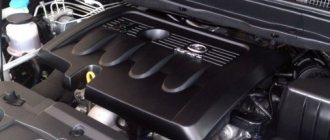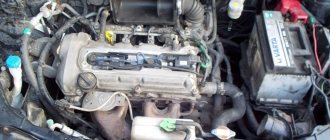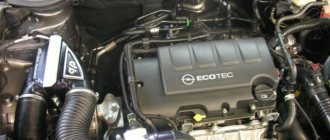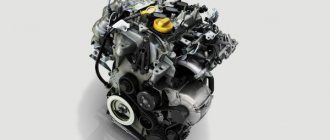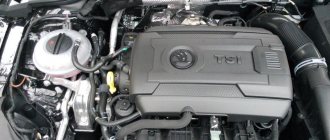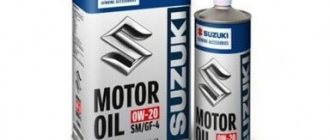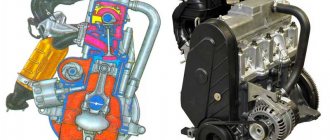All texts were written by me, are authored by Google, included in the original Yandex texts and notarized. For any borrowing, we immediately write an official letter on company letterhead in support of search networks, your hosting and domain registrar.
Next we go to court. Don’t try your luck, we have more than thirty successful Internet projects and have already won a dozen lawsuits.
The joint work of two industrial giants Daimler and Mitsubishi Group led to the appearance of the 4A9 series of engines. The motors are of all-aluminum construction. The power plant is highly efficient, but at the same time provides high dynamic performance for the vehicles on which it is installed.
Description of the development process and features of the 4a92 engine
The development of the 4a92 engine was directly carried out by MDC Power, which is a subsidiary of Daimler. The project was overseen by Mitsubishi Motors Corporation. The cooperation made it possible to produce a series of engines with excellent technical characteristics. The fuel consumption of the 4a92 engine turned out to be one of the best in its class. This was achieved thanks to successful design solutions affecting the camshaft, crankshaft, pistons, exhaust manifold, air filter, intake manifold, valve stem seals and flywheel.
The main design features and technical characteristics of the engine, distinguishing it from competitors produced in 2004:
- four valves per cylinder, allowing you to increase the power of the 6-liter engine;
- variable valve timing system using MIVEC electronic control at the intake;
- the optimal ratio between efficiency and liter engine power.
the cylinder head has two camshafts;
The motor requires proper attention throughout its operation. Violation of maintenance time intervals can lead to excessive wear of the CPG. The resulting increased oil consumption is only the beginning. In the future, the 4a92 may completely stop starting and only a major overhaul can correct the situation.
Engine Mitsubishi 4A92 (4A92 ASX, 4A92 Lancer)(1590)
Engine models and characteristics, information on repair and tuning
Current topic of the day:
Home › Mitsubishi › Mitsubishi engines
The birth of the 4a92 power unit was the result of a successful creative symbiosis between two titans of the automotive industry - the Daimler AG concern and the Mitsubishi Group conglomerate. The joint activities of the design bureaus of these companies led to the appearance in 2004 of the “4a9” series of engines, characterized by a high level of efficiency combined with excellent dynamic performance of the carrier vehicle.
The 4a92 engine is the most modified version of the 4a9 main power plant. The direct developer of this version of the engine was a subsidiary of Daimler, and the project was supervised by the Mitsubishi Motors Corporation. Having become the final modification in the series, the 4a92 engine remains in demand today. This is due to its excellent, perhaps one of the best in class, technical and operational characteristics.
The individuality of the design solutions used in the development of individual elements (flywheel, valve stem seals, crankshaft and camshaft, etc.) distinguishes it from competitors that appeared on the market in the same 2004:
- Equipping the cylinder head with two camshafts.
- The use of four valves per cylinder significantly increases the power of the 1.6-liter power plant.
- Changes in the valve timing system provided by MIVEC electronic control at the inlet.
- Optimization of the ratio of volumetric power and efficiency of the power unit.
However, it should be noted that it is necessary to strictly adhere to time and operational maintenance intervals, since the consequence of their violation is increased wear of the elements of the central piston group. And the increased oil consumption, inevitable in this case, is just a harbinger of much more serious consequences.
Review of faults and repair methods
In contrast to its efficiency, the 4a92 internal combustion engine cannot boast of reliability. Even engines leaving the factory consume large quantities of oil. The design of the engines is such that it doesn’t really matter what kind of oil the driver pours, it will go away. In this case, the volumes of burned lubricant will be impressive, reaching up to a liter per thousand mileage.
Problems with the timing belt cause the piston to bend the valve. After this you cannot do without serious repairs to the cylinder head. Damage to the camshaft drive can occur when the vehicle reaches 40 thousand kilometers.
The increased compression ratio increased the load on the pistons. They are often deformed, burnt out, and damaged by chips. Their operating conditions are complicated by an insufficiently well-thought-out cooling system and oil pump. The low safety margin of the CPG is especially often manifested when the engine is forced. Incorrectly selected oil for 4a92 can lead to coking or sticking of the rings, and also becomes a common cause of piston jamming inside the cylinder. In this case, the problem cannot be solved without dismantling the engine.
When performing any repair work, it is important to control the order of operation of the cylinders. Otherwise, the engine will not start. After this, the amount of labor and time spent on troubleshooting can increase several times.
Maintenance schedule 4G1592 180 l. With.
The in-line naturally aspirated Japanese 4G15 engine requires maintenance within the following periods:
- due to the unequal design of the timing belt and the BC head, the oil is changed after 5 - 10 thousand mileage, a new oil filter is installed;
- clogging of the fuel filter occurs after 4 years, the air filter cartridge after 20 thousand km;
- the exhaust manifold of naturally aspirated engines begins to burn out at the turn of 20,000 km, of turbocharged modifications earlier;
- the coolant requires replacement after 40 thousand km, as it begins to lose its properties;
- attachment belts should be changed after 50,000 km, timing belt after 90 thousand mileage;
- crankcase ventilation is purged after 30,000 km;
- spark plugs are changed at 20,000 km, battery after 50,000 km;
- in engines without hydraulic pushers, the thermal valve clearances are adjusted after traveling 30,000 km.
Replacing the timing belt
In general, the internal combustion engine structure is quite simple; motors are conventionally classified as “million-dollar”.
Engine tuning and modernization options
A feature of any modernization of the 4a92 engine is caution in all actions taken. The motor is precisely tuned to optimal values in production, so it is quite difficult to improve dynamic performance without significantly deteriorating other factors, for example, efficiency. Finding a description of various tuning options is not difficult, but the validity of the methods given in them always remains in question. Most of them, even if they do not immobilize the car, simply lead to an increase in fuel consumption.
The first thing to start tuning with is flashing the electronic control unit. Its algorithms are designed taking into account the golden mean between power and efficiency with environmental friendliness. Changing the program will either reduce fuel consumption or increase the dynamic performance of the car. One of the main advantages of flashing is the ease of returning to factory settings.
Tuning the mechanical part is quite complicated. An intake filled with electronics is also quite difficult to upgrade. The occurrence of software errors can negate all modifications to the fuel supply.
List of car models in which the 4a92 engine was installed
MDC Power designed the motor primarily for use by Mitsubishi Motors Corporation. The power plant has found a place in cars:
- Mitsubishi ASX;
- Mitsubishi Lancer.
Daimler management together with the Mitsubishi Group decided to sell 4a92 to other automakers. The light weight, efficiency and high power of internal combustion engines have attracted the interest of both large and small companies producing cars:
- Brilliance H530;
- Brilliance V5;
- Zotye Z300;
- CITROEN C4;
- CITROËN C4 AIRCROSS.
Chinese manufacturers made their own changes to the engine. The modernization made it possible to reduce the cost of the engine, but it was not possible to achieve the same efficiency as the original 4a92 in the Middle Kingdom. Reliability also remained a big question.
Modifications to the 4a92 power unit
The 4a92 engine itself is a modification of the 4a9 engine developed in 2004 for the Mitsubishi Colt. This motor has two daughter variants:
- 4a91, which has quite a lot of “childish” problems;
- 4a92 is the most modified version.
In turn, the 4a92 engine has modifications adapted for car brands:
The 4a92 powerplant became the final one in the 4a9 series. After it, Daimler and Mitsubishi Group decided to get serious about the 4B1 series. It was not MDC Power who began working on the project, but a representative of Daimler Chrysler, developers from Mitsubishi Motors, and additionally Hyundai Motor specialists began to be present.
MDC Power engineers and designers managed to create a truly successful motor that outperforms competitors both in terms of efficiency and dynamic characteristics. These factors allow 4a92 to remain in demand in the automotive market to this day. This engine remains one of the most commonly found engines in Mitsubishi ASX and Mitsubishi Lancer cars.
Technical characteristics of the power plant
| Parameter name | Parameter value | Unit |
| Volume | 1590 | cm 3 |
| Power | 117/85,0 | hp/kW |
| Torque | 154.0 at 4,000 rpm | Hmm |
| Compression ratio | 11/1 | — |
| Volume (working) of the combustion chamber | 36.14 | cm 3 |
| Power index | 73.0/1 000 | hp/cm 3 |
| Number of cylinders | 4 | things |
| Number of main supports | 5 | things |
| Number of valves | 16 | things |
| Cylinder diameter | 75 | millimeters |
| Piston stroke | 90 | millimeters |
| Type of fuel used | Gasoline AI-95 | — |
| CO 2 emission value | 135 | g/km |
| Fuel consumption | 5,9 – 7,3 | l/100 km |
| Fuel injection distribution system | Injector, ECI - MULTI | — |
| Type | in-line | — |
| Oil volume | 3.5 | l |
| Environmental standard | Euro – 4 | — |
| Resource | 250,0 + | thousand km |
Technical specifications 4B11 2.0 l165 l. With.
To ensure performance characteristics, the designers of the GEMA alliance used an in-line engine design with 4 cylinders. Not only the cylinder head and the intake manifold, but also the cylinder block are made of aluminum alloy in the engine.
Cylinder block 4B11
For the basic atmospheric version, the technical characteristics of 4B11 have the following values:
| Manufacturer | GEMA Alliance (Chrysler, Mitsubishi, Hyundai) |
| Engine brand | 4B11 (G4KD) |
| Years of production | 2005 – … |
| Volume | 1998 cm3 (2.0 l) |
| Power | 110 – 121.4 kW (150 – 165 hp) |
| Torque moment | 196 Nm (at 4800 rpm) |
| Weight | 241 kg |
| Compression ratio | 10,5 |
| Nutrition | injector |
| Motor type | in-line petrol |
| Ignition | DIS-4 |
| Number of cylinders | 4 |
| Location of the first cylinder | TVE |
| Number of valves on each cylinder | 4 |
| Cylinder head material | aluminum alloy |
| Intake manifold | duralumin |
| An exhaust manifold | cast iron |
| Camshaft | 5 supports, 8 cams |
| Cylinder block material | aluminum alloy |
| Cylinder diameter | 86 mm |
| Pistons | cast aluminum |
| Crankshaft | 5 supports, 8 counterweights |
| Piston stroke | 86 mm |
| Fuel | AI-95 |
| Environmental standards | Euro 4 |
| Fuel consumption | highway – 5.6 l/100 km combined cycle 7 l/100 km city – 9.3 l/100 km |
| Oil consumption | maximum 1 l/1000 km |
| What kind of oil to pour into the engine by viscosity | 5W30, 5W20 |
| Which engine oil is best by manufacturer | Liqui Moly, LukOil, Rosneft, Motul, Mannol, Mobil, Castrol |
| Oil for 4B11 by composition | synthetics, semi-synthetics |
| Engine oil volume | 4.1 l in engines until 2012 |
| Operating temperature | 95° |
| ICE resource | declared 250,000 km actual 350,000 km |
| Adjustment of valves | washers |
| Cooling system | forced, antifreeze |
| Coolant volume | 7.5 l |
| water pump | 1300A083 |
| Spark plugs for 4B11 | DIFR6C11 from NGK or FR5EI, 14mm thread, 19mm long, 16mm key |
| Spark plug gap | 1.1 mm |
| Valve train chain | four-row, 1140A073 Mitsubishi |
| Cylinder operating order | 1-3-4-2 |
| Air filter | LYNXauto LA1958 |
| Oil filter | Champion COF102126S, Bosch 0986B00015 |
| Flywheel | 7 mounting holes, lightweight type |
| Flywheel mounting bolts | M12x1.25 mm, length 26 mm |
| Valve stem seals | NOK MN183952 |
| Compression | from 13 bar, difference in adjacent cylinders maximum 1 bar |
| XX speed | 750 – 800 min-1 |
| Tightening force of threaded connections | spark plug – 25 Nm clutch bolt – 30 Nm bearing cap – 26 Nm + 45° (main) and 5 Nm + 30 Nm + 90° (rod) cylinder head – 4 stages 3 Nm, 35 Nm + 90° + 90° |
Possible malfunctions and reasons for their occurrence
The reliability of the power unit is perhaps the main thing that the vast majority of car owners care about. And this seems quite logical, since engine repair requires not only special conditions and equipment, but also quite a long time and high material costs. But with the reliability of the “4a92”, not everything is as smooth as, for example, with efficiency.
The first and probably the main problem of the ninety-second is high oil consumption, often reaching up to 1000 milliliters per 1000 kilometers. Moreover, this is equally relevant for completely new engines and units with varying degrees of operating time.
Another factor that significantly reduces the level of reliability of the power plant is the insufficient safety margin of the central piston group (hereinafter referred to as the CPG). Due to an increase in the compression ratio, the load on the piston has increased significantly, often causing their deformation, chipping, and burnout. In the event that the depth of these defects does not allow them to be eliminated by boring to the last repair size, the only method of repair is a sleeve. Combined with the low-efficiency operation of the oil pump and cooling system, the operating conditions of the CPG can hardly be called ideal.
Upon reaching a mileage of 35,000-40,000 kilometers, there is a real threat of malfunctions and damage to the gas distribution mechanism (hereinafter referred to as the timing belt). First of all, a break or severe stretching of the timing chain. In this case, the pistons bend the valves and break the rocker arms. The process of replacing a chain is simple, but quite expensive financially (this is one of the eternal automotive questions “chain or belt?”). The main condition for a successful result is to control the order of operation of the cylinders using timing marks (dark chain links).
Maintenance schedule
One of the main points of the maintenance regulations for any power unit is the timely replacement of engine oil. And here it is important not only to observe the established time and technological intervals, but also to use oil with clearly defined characteristics: seasonality, viscosity, composition of the additive complex, etc. Incorrectly selected oil causes piston rings to “stick” or “coke”, piston jamming, etc.
The maximum technological interval (mileage) for changing the oil should not exceed 15,000 kilometers. For car owners who practice a dynamic driving style, this figure should be halved.
| Oils recommended by the manufacturer | Other oils with satisfactory characteristics |
| Mitsubishi 0W30 | Idemitsu Zepro 0W-20 API SN |
| Mitsubishi 5W30 | Idemitsu Zepro 5W-30 API SN |
| Mitsubishi 5W40 | 5W-30 Millers EE Longlife ECO |
| Mitsubishi 10W30 | Yacco VX 1500 0W-30 |
According to reviews from some car owners operating the 4a92 internal combustion engine, the use of motor oils from third-party “brand” manufacturers helps to almost double the life of the power unit before the first major overhaul (from 80,000 – 90,000 kilometers to 160,000 – 170,000 kilometers).
An important point in the oil change process is replacing the oil filter. Otherwise, the engine may starve of oil and increase wear on the surfaces of the rubbing elements, and as a result, the formation of scuffing.
The valve adjustment procedure is performed on power plants not equipped with hydraulic compensators. High-quality and competent adjustment will ensure optimal fuel consumption and the maximum permissible compression value.
When performing work that requires dismantling the cylinder head (hereinafter referred to as the cylinder head), it is necessary to pay attention to the correct tightening of the mounting bolts, since this factor directly affects the power of the power unit and its technical condition. The tightening torque, or force applied, is different for aluminum and cast iron blocks. For the “4a92” engine it is 1.96 – 2.4 H/m (this information is located on the engine valve cover).
Attachments and elements of the ignition system require virtually no outside control. Spark plugs must be replaced every 10,000 miles, however, if their performance parameters clearly deteriorate, you should not delay. The ninety-second version is quite sensitive to the quality of the spark.
Motor maintenance schedule
For the 4a92 engine, it is extremely important which oil the car owner chooses to pour. The best choice, recommended by the manufacturer, is to use branded Mitsubishi oil 0W30, 5W30, 5W40, 10W30. The maximum replacement interval is 15,000 km. In the case of dynamic driving, the replacement frequency should be doubled.
Many car owners do not recommend oil from the manufacturer. This is due to the fact that the 4a92 engine has twice the lifespan of third-party branded lubricants. The use of Mitsubishi oil leads to the fact that overhauls have to be carried out when the odometer shows 80-90 thousand kilometers.
Each lubricant change should be accompanied by a filter replacement. Otherwise, its clogging leads to oil starvation of the filter. This causes increased wear of all rubbing surfaces. Scoring may occur. The oil filter is easy to access, so you can easily change it yourself.
Valve adjustment is only necessary on engines without hydraulic compensators. Engine compression and fuel consumption depend on the correctness of this operation. When performing maintenance, you should take into account that the 4a92 engine uses a DOHC circuit, which introduces its own characteristics into valve adjustment.
Ignition and attachments rarely require outside intervention. The main thing is to change spark plugs with 4a92 on time, since the engine is sensitive to the quality of the spark. The manual prescribes replacement every 20 thousand km, without waiting for the spark plug parameters to deteriorate.
Cars equipped with Mitsubishi 4a92
Due to the fact that the 4a92 internal combustion engine was purposefully developed to equip vehicles of the Mitsubishi conglomerate, the following were initially equipped with it:
- Mitsubishi ASX;
- Mitsubishi LANCER sedan;
- Mitsubishi LANCER SPORTBACK.
However, the efficiency, good power and low dead weight of the power unit contributed to the fact that cars of some other manufacturers were also equipped with it:
- CITROEN C4, including the “AIRCROSS” model;
- Zotye Z300;
- Brilliance V5;
- Brilliance H530
What oil is required for the Mitsubishi Lancer engine
Original
For Mitsubishi Lancer X with a gasoline engine, the manufacturer recommends the original Mitsubishi MZ 5W-30 art 320757 or Mitsubishi Engine Oil 5W-40 art MZ320362. For diesel engines – Mitsubishi Diesel Oil 5W-30. The products indicated comply with the following tolerances:
- For gasoline engines: ACEA A3, A5; API-SM
- For diesel engines: ACEA B3, B4, B5; API-CF
Unoriginal
Mitsubishi Lancer is a fairly old car with high mileage and no warranty. Therefore, it makes sense for him to choose a relatively inexpensive analogue oil, which must meet all the parameters relevant for the original motor oil. Trusted brands include Kixx, Shell, Valvoline, Mannol, Castrol, Mobil, Liqui Moly, etc.
As for viscosity, it is determined by the SAE parameter, which is selected depending on the temperature climate in which the car is located most of the time. For example, SAE 20W-40 or 25W-50 is suitable for exclusively summer use. In winter, it is recommended to fill it with 0W-40, 0W-30 or 5W-30, and for year-round trips, an all-season lubricant with SAE parameters 10W-40, 10W-30 or 5W-40 is required.
In addition, an equally important characteristic is the appropriate API approval - it is selected based on the model year of the vehicle. So, using the example of a 2010 Mitsubishi Lancer X, we will determine the oil suitable for it - this is an all-season liquid on a semi-synthetic basis, with parameters 10W-40 and API-SL. For cars of later years, for example 2014, pure synthetics with API-SM approval are suitable. Below are the best analogue engine oils for Mitsubishi Lancer.
- Wolf Vitaltech 5W-30 Asia-US art 8302718
- Shell Helix Diesel Ultra 5W-40 art 550040558
- Lukoil Genesis Universal 10W-40 art 3148646
- Mannol Classic 10W-40 art 1155.
